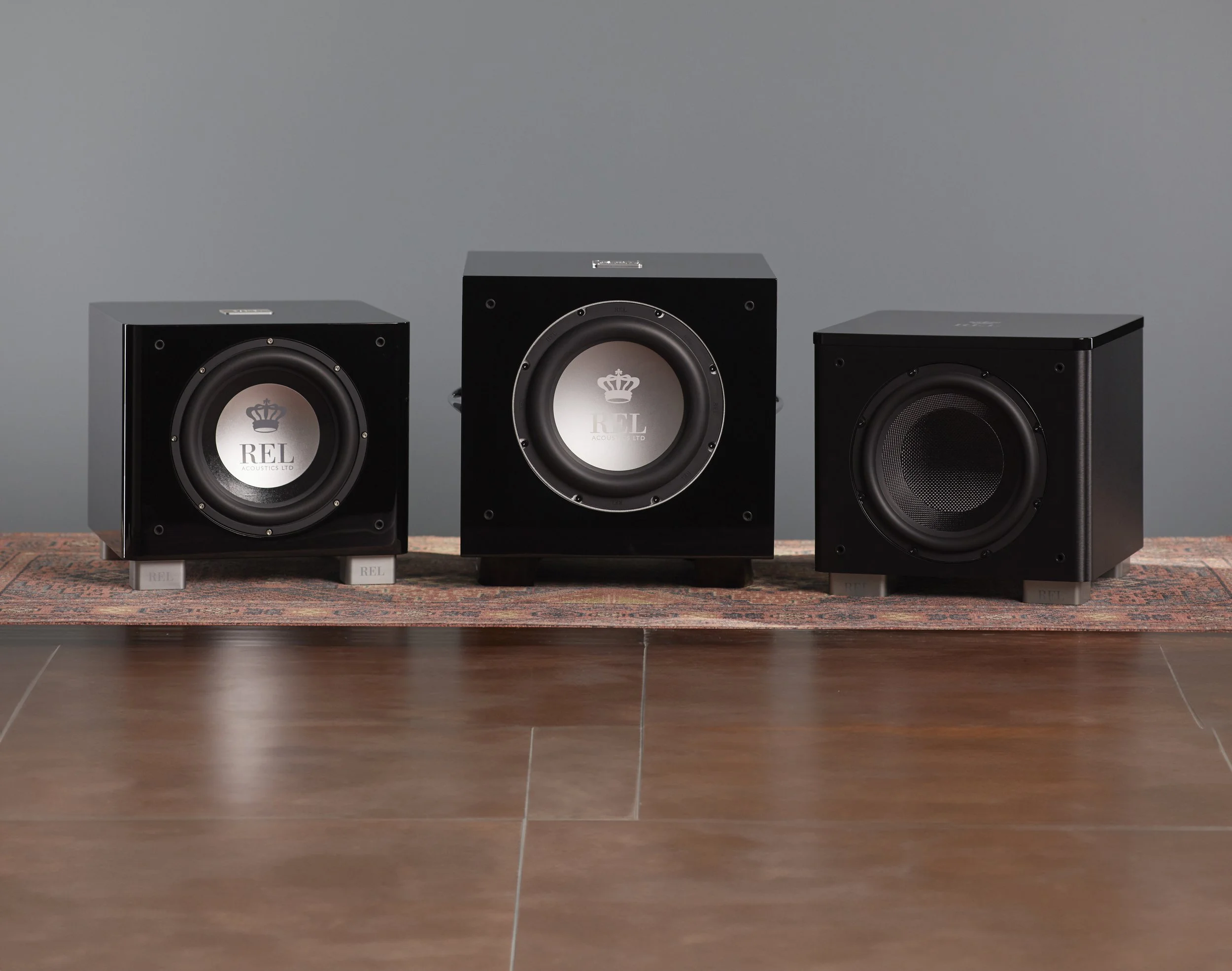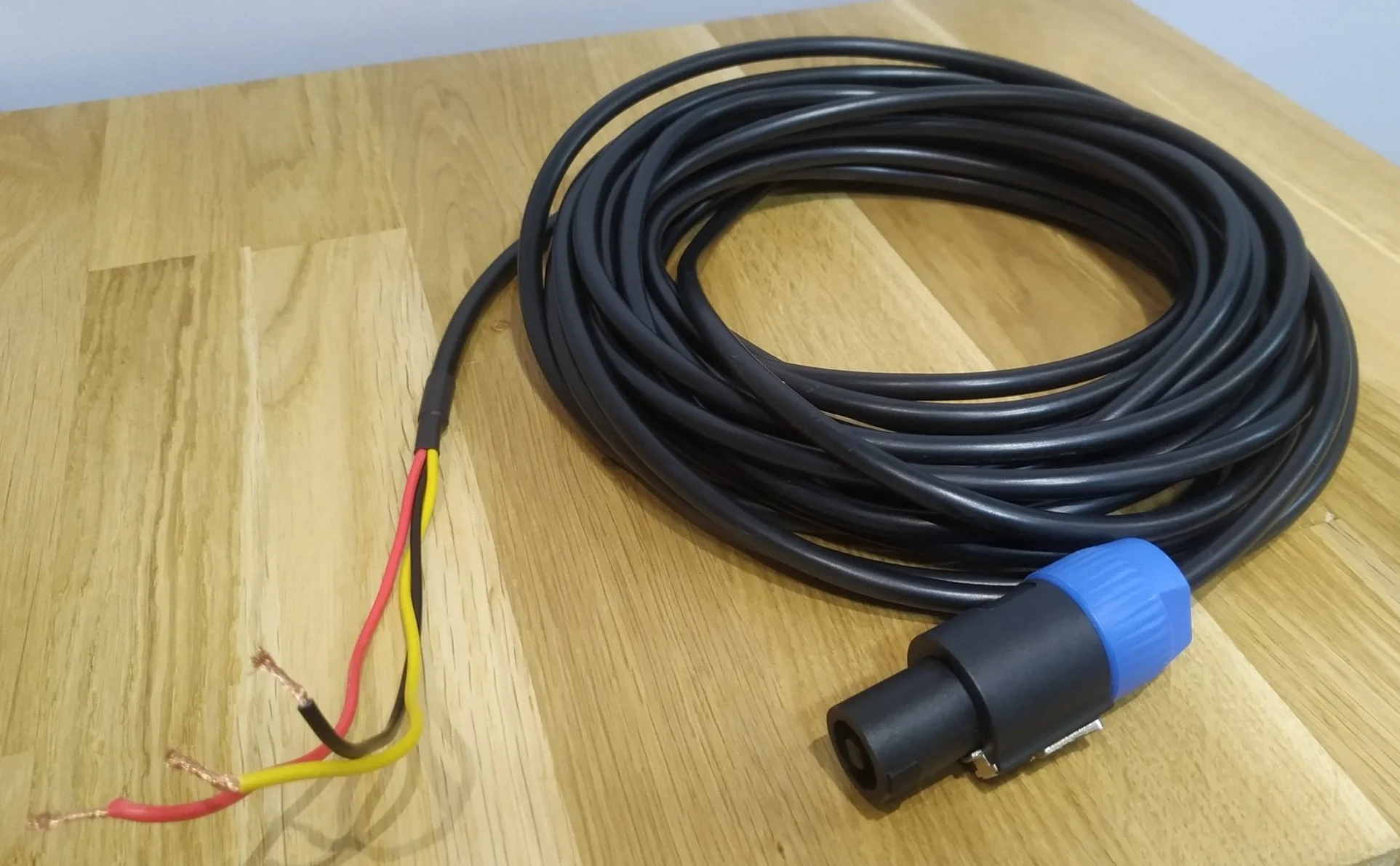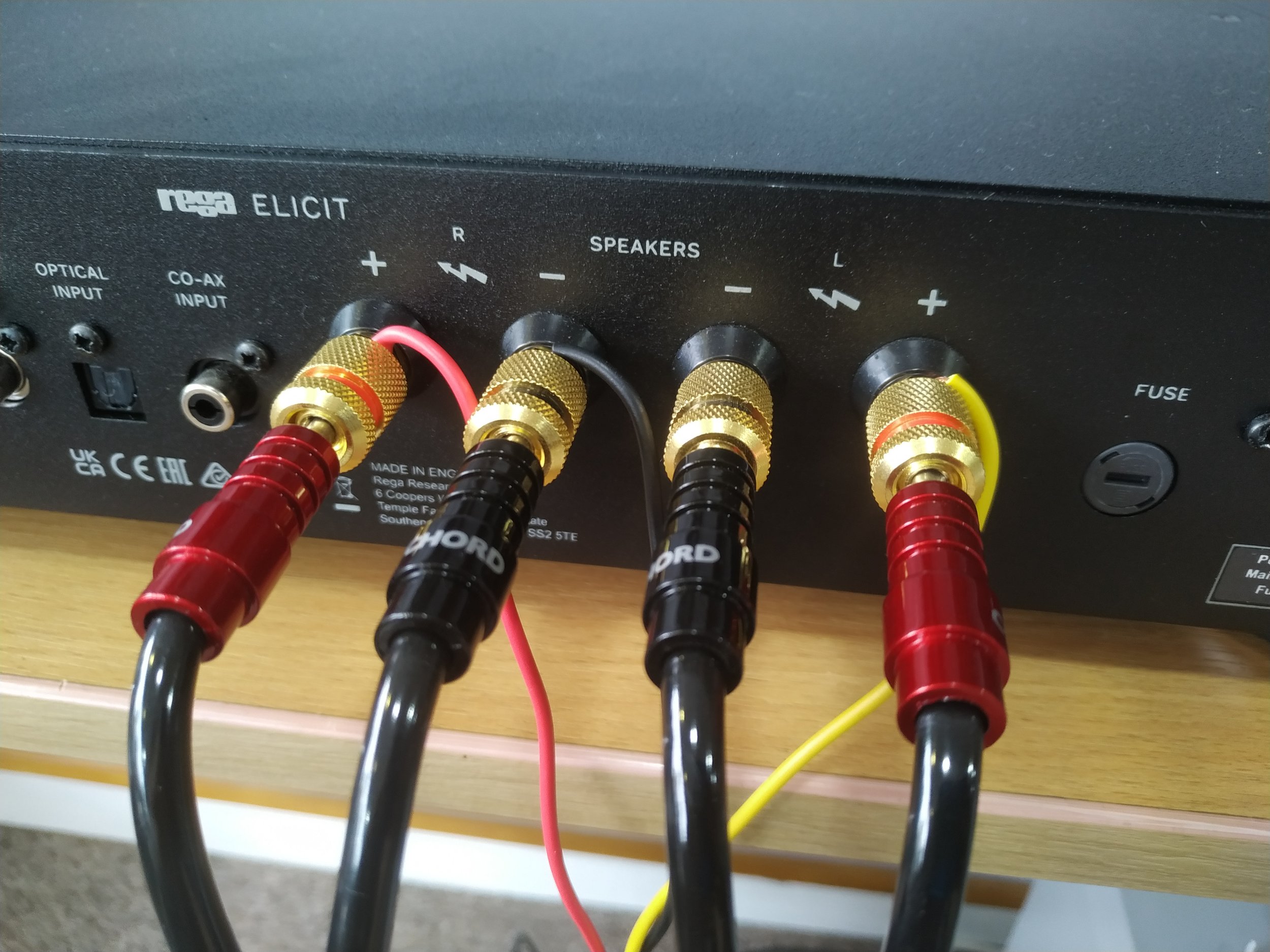Low End Theory - Let’s talk REL Subwoofers
/“Are Subwoofers All About Bass? Are subwoofers all about surround sound? Can a subwoofer be added to a two-channel system?” These are questions that we get on a daily basis here at Audio T, so Matt from our Cardiff store has decided to take a deep dive into the world of subwoofers, exploring their effect in two-channel systems and how they can improve your Hi-Fi’s overall performance. So, let’s embark on this two-channel sonic journey with one of our favourite subwoofer brands, REL Acoustics, and see where we end up.
On my wild and wonderful journey through the world of Hi-Fi, I have set up many REL subwoofers in customers’ surround sound AV systems for home cinema, but surprisingly not so many in two-channel systems. Granted, in-store I have demonstrated subwoofers in two channel systems quite a few times, and I have always been very impressed with how the system sounds when adding a subwoofer or two into the mix. This raises the question for me: How can a subwoofer improve the sound of my own Hi-Fi?
After a chat with Rob Hunt, UK Director of Sales for REL, I decided to take home their T7x subwoofer for the weekend to try it in my own system.
The REL t7x in white
Before I dive in and talk your ears off about my findings, let’s talk a little history…
Where Did It All Start for the Kings of the Subwoofer?
REL Acoustics was founded in our local county, Bridgend, right here in South Wales by Richard Edmund Lord. As you can gather, his name is where "REL" came from. Richard first entered the Hi-Fi scene after feeling rather dissatisfied with the subwoofers available at the time, as they were not performing in the ways he wanted them to.
This led him to design his first subwoofer, which he built into a bay window area in his own home. Fast forward to 1990, and REL Acoustics was born when Richard first came up with the high-level input to match the signal from the final output stage of an amplifier or receiver. This produces a seamless quality that precisely matches the sound being fed to your loudspeakers. There have been many more innovations from REL over the years in their subwoofers, such as Class A/B amplification circuits. Their cabinets are also acoustically braced, not unlike an acoustic guitar, which goes to show it’s not just about the amplification or the speakers; the cabinet and how it’s tuned play a really big role in how the subwoofer sounds.
Is It All About Bass?
In some ways, yes, a subwoofer is there to create big low-end frequency. But I feel there’s more to it than just low end with REL subwoofers, especially the T7x I have at home right now (which I will tell you more about shortly).
But First, Let’s Talk About Speakers
As we know, most speaker can only reproduce a certain amount of bass frequencies due to the size of the cone as well as the magnet behind the driver. A loudspeaker will sound its best in the manufacturer's anechoic chamber or recording studio locked away in the R&D dungeons, or the mind blowing Jupiter speaker analysis system at Dynaudio HQ in Denmark. The main problem with any speaker design arises in our own listening environments.
Dynaudio jupiter - speaker analysis system in denmark
Dynaudio Evoke 10
For instance, the low frequency of my Dynaudio Evoke 10 is at 47Hz. In the perfect room, they sound amazing, and they do sound great in my own system, but there is just something missing from the overall sound stage. This is due to my own living room, as I, like many of you, don’t have a perfect listening space.
So here comes the really big question: How do I fix this? Do I get bigger speakers? Hmm, I do like my speakers, and I don’t feel that changing them for anything of a comparable size will help. This is where a subwoofer comes to the rescue.
What Does a Subwoofer Do?
The main job of a subwoofer is to reach frequencies that your speakers can’t, all whilst matching the movement and timing and crossover point of the bass driver in our loudspeakers, thus giving you that missing sub-bass frequency without compromising the other frequencies.
As we know, not all speakers have the same frequency response as one another, but luckily the subwoofer can be perfectly tuned to match the system. For instance, in a two-channel setup like I have here, this can be adjusted using the high-level control and the crossover control found at the back of the subwoofer. (If you are running a surround sound combination, you will run both the high-level and the LFE (low-frequency effects) connection.)
“How Is the Subwoofer Connected in a Two-Channel Setup?”, I Hear You Say!
REL kindly provides a high-level cable with every subwoofer they manufacture, which has a Speakon connector on one end with red, black, and yellow wires on the other.
Rel Hi-Line Cable
The main Speakon connector goes into the back of the subwoofer. You may be wondering, what do I do with the three wires? There are a few ways you can run these into your system; the two main ones are: first, going straight into your amplifier via the speaker terminals on the back of your amplifier. The best way to look at this is: red to the right red terminal (i.e., the positive terminal), yellow to the left red terminal, and black to either of the black terminals (i.e., negative terminals). This is generally the preferred method for sound quality. The other way is to connect the wire directly to your speaker terminals, twisting the red and yellow wires together; they go to the red positive terminal, and black goes to the negative terminal. This can be useful for cable management if you’d like to tidy your system up.
REL also offer a range of upgraded Bassline Blue Cables that have either banana or spade connections on the other end of the Speakon to offer maximum audio quality.
I went with the wired-direct-to-the-amplifier option
Now that we’re all wired up, with a little fine-tuning and correct placement, my amplifier is all warmed up and ready for some serious listening.
Now for the Fun Part - How Does It Sound?
Here I am, sitting in my music room on a Sunday evening with a few choice albums ready to rock. The artists, albums, and tracks are as follows:
Artist: Alice in Chains
Album: MTV Unplugged
Release Year: 1996
Track: Brother
Format: CD
Artist: The Cult
Album: Sonic Temple
Release Year: 1989
Track: Sweet Soul Sister
Format: Vinyl
Artist: Peter Gabriel
Album: i/o Dark-Side Mix
Release Year: 2023
Track: Panopticon
Format: Vinyl
My ever-growing system
It’s important to note that when looking to add to or change our Hi-Fi systems that we are the best judges of what we want. So we should trust our ears. We are the ones who are familiar with the sound of our Hi-Fi, our houses and what’s in our music collections.
Even though I know that there are always improvements to be made, I can honestly say my system already sounded great before adding anything. Now, with the subwoofer on, I can assure you the REL T7x really adds more dynamic range to the music.
Yes, there is more low-end, but the bass has better definition and is more assertive, which also helps the mid and treble range coming out of my speakers, underpinning everything and really bringing out a much bigger soundstage. Above all, it adds musicality and makes listening more fun. I’d even go as far as to say it’s transformative. it’s like having the band in your living room.
So, what did the REL do to the sound of the albums I was spinning? (It was a long listening session, so I promise I won’t go on too much and bore you rigid)…
Starting with the Alice in Chains track: with the subwoofer on, the whole performance felt more alive, Layne Staley & Jerry Cantrell’s vocals were more present, and the acoustic guitars sounded fuller-bodied. For the next track, Of Course, the volume and drive of the performance went up.
The Cult’s Sweet Soul Sister - let’s just say Billy Duffy’s guitar tone with the subwoofer on was more nuanced. You can really hear the natural tone of his Les Paul and Marshall combination. I let the whole album play through (Oh, my poor neighbours!).
Last but not least, Peter Gabriel’s track Panopticon. This track sounded amazing already, but with the subwoofer on, it really changes the track, giving more assertiveness in the bass and bringing Peter’s vocals out more in the recording. The guitars are also more present.
Which Is the Right Subwoofer for Me? There Are So Many!
The great thing is REL has an amazing tool on their website to help calculate which subwoofer is right for you by determining what speakers you have in your system and matching the correct subwoofer to you (Click Here to have a go yourself). In my case, the REL T7x is what was suggested and it is the right fit for me. I can happily say that there will be a REL T7x residing in my system very soon—watch this space.
If you’re interested in putting a subwoofer in your system or just want to hear for yourself what it adds to the mix, we can demonstrate different subwoofer options both at home and in-store. Let us show how much of a big change a subwoofer can make and pop in and see us and have a listen.
Thank you for taking the time to read my blog.
Matt - Audio T Cardiff
If you have any questions about any of the equipment featured in this article, or any other Hi-Fi or home cinema enquiries, be sure to Contact Us.
If you’ve enjoyed this, why not go ahead and read some more of our other blogs, and be sure to follow us on our social media channels below…
REL can be found at the following Audio T stores -















